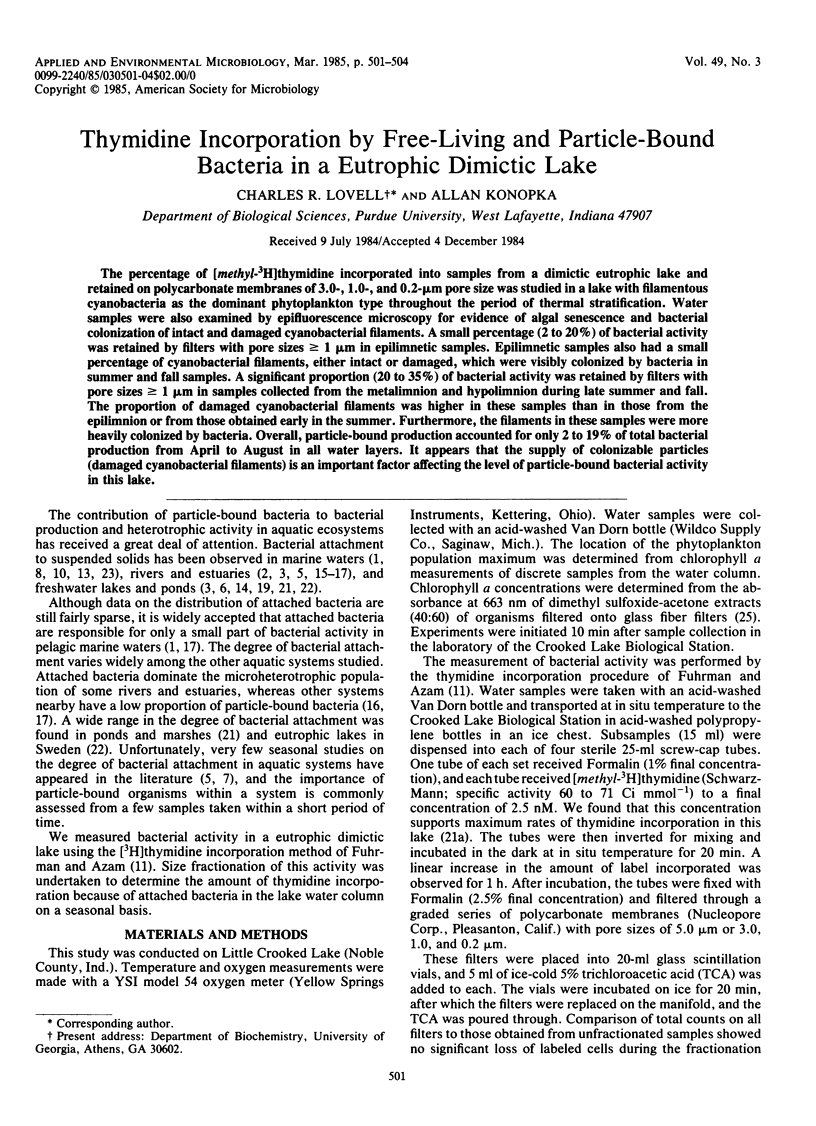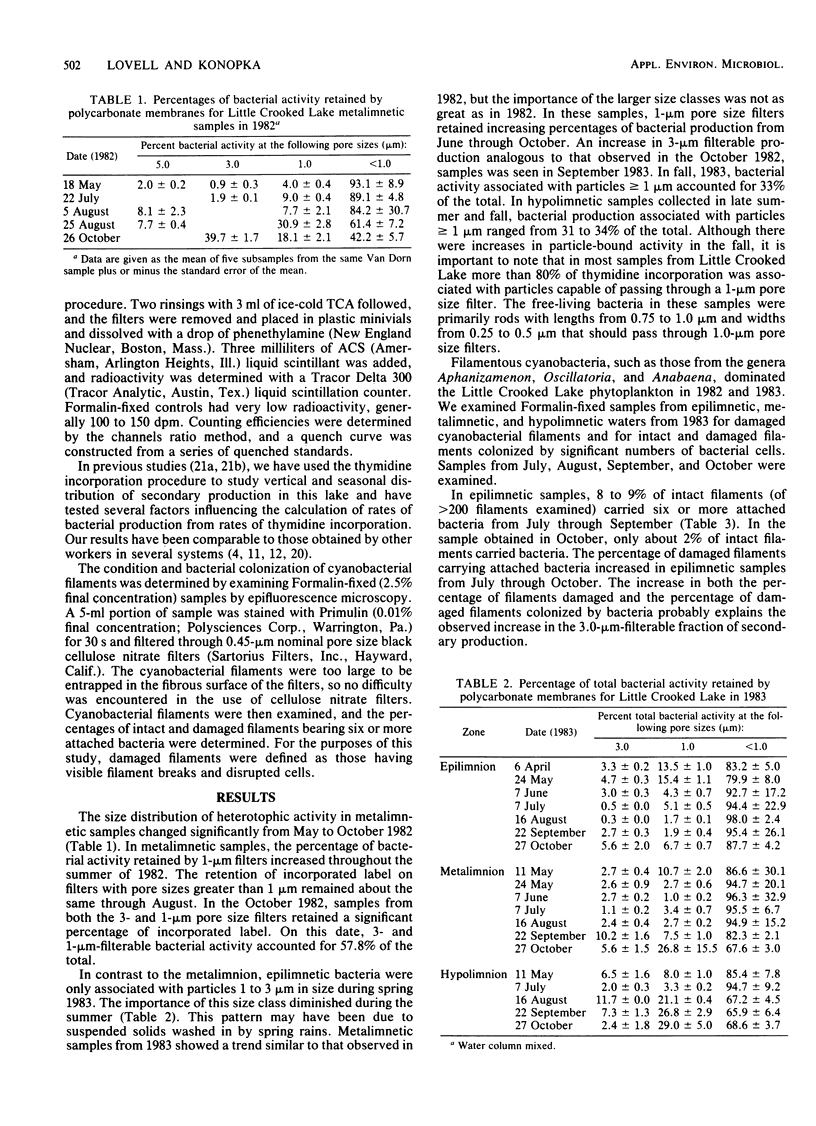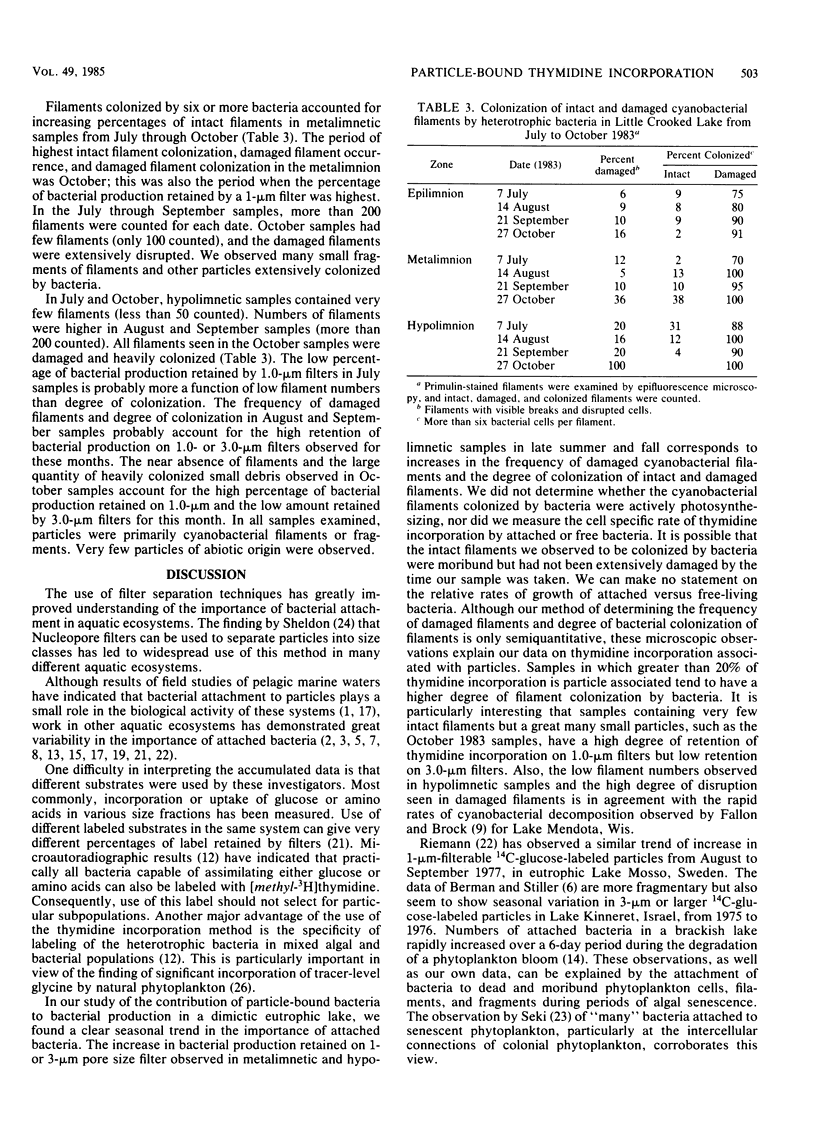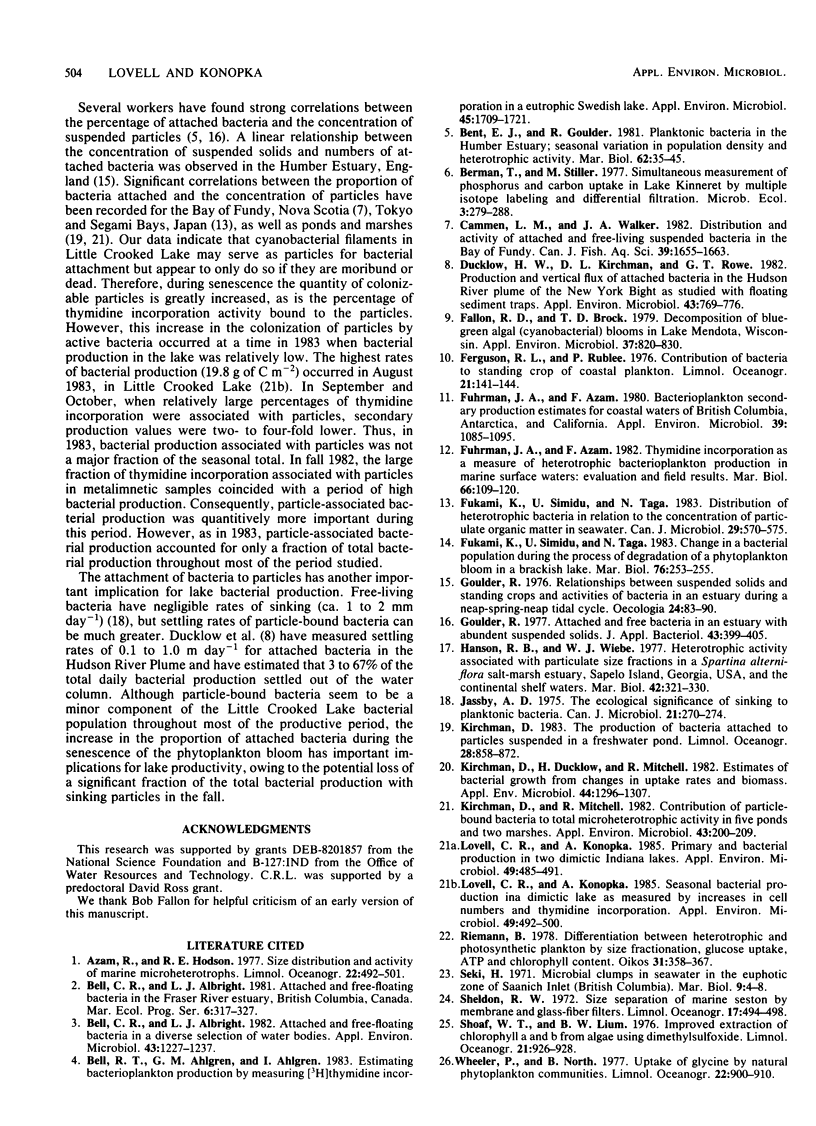Abstract
The percentage of [methyl-3H]thymidine incorporated into samples from a dimictic eutrophic lake and retained on polycarbonate membranes of 3.0-, 1.0-, and 0.2-μm pore size was studied in a lake with filamentous cyanobacteria as the dominant phytoplankton type throughout the period of thermal stratification. Water samples were also examined by epifluorescence microscopy for evidence of algal senescence and bacterial colonization of intact and damaged cyanobacterial filaments. A small percentage (2 to 20%) of bacterial activity was retained by filters with pore sizes ≥ 1 μm in epilimnetic samples. Epilimnetic samples also had a small percentage of cyanobacterial filaments, either intact or damaged, which were visibly colonized by bacteria in summer and fall samples. A significant proportion (20 to 35%) of bacterial activity was retained by filters with pore sizes ≥ 1 μm in samples collected from the metalimnion and hypolimnion during late summer and fall. The proportion of damaged cyanobacterial filaments was higher in these samples than in those from the epilimnion or from those obtained early in the summer. Furthermore, the filaments in these samples were more heavily colonized by bacteria. Overall, particle-bound production accounted for only 2 to 19% of total bacterial production from April to August in all water layers. It appears that the supply of colonizable particles (damaged cyanobacterial filaments) is an important factor affecting the level of particle-bound bacterial activity in this lake.
Full text
PDF



Selected References
These references are in PubMed. This may not be the complete list of references from this article.
- Bell C. R., Albright L. J. Attached and free-floating bacteria in a diverse selection of water bodies. Appl Environ Microbiol. 1982 Jun;43(6):1227–1237. doi: 10.1128/aem.43.6.1227-1237.1982. [DOI] [PMC free article] [PubMed] [Google Scholar]
- Bell R. T., Ahlgren G. M., Ahlgren I. Estimating Bacterioplankton Production by Measuring [H]thymidine Incorporation in a Eutrophic Swedish Lake. Appl Environ Microbiol. 1983 Jun;45(6):1709–1721. doi: 10.1128/aem.45.6.1709-1721.1983. [DOI] [PMC free article] [PubMed] [Google Scholar]
- Ducklow H. W., Kirchman D. L., Rowe G. T. Production and vertical flux of attached bacteria in the hudson river plume of the new york bight as studied with floating sediment traps. Appl Environ Microbiol. 1982 Apr;43(4):769–776. doi: 10.1128/aem.43.4.769-776.1982. [DOI] [PMC free article] [PubMed] [Google Scholar]
- Fallon R. D., Brock T. D. Decomposition of blue-green algal (cyanobacterial) blooms in lake mendota, wisconsin. Appl Environ Microbiol. 1979 May;37(5):820–830. doi: 10.1128/aem.37.5.820-830.1979. [DOI] [PMC free article] [PubMed] [Google Scholar]
- Fuhrman J. A., Azam F. Bacterioplankton secondary production estimates for coastal waters of british columbia, antarctica, and california. Appl Environ Microbiol. 1980 Jun;39(6):1085–1095. doi: 10.1128/aem.39.6.1085-1095.1980. [DOI] [PMC free article] [PubMed] [Google Scholar]
- Jassby A. D. The ecological significance of sinking to planktonic bacteria. Can J Microbiol. 1975 Mar;21(3):270–274. doi: 10.1139/m75-038. [DOI] [PubMed] [Google Scholar]
- Kirchman D., Ducklow H., Mitchell R. Estimates of bacterial growth from changes in uptake rates and biomass. Appl Environ Microbiol. 1982 Dec;44(6):1296–1307. doi: 10.1128/aem.44.6.1296-1307.1982. [DOI] [PMC free article] [PubMed] [Google Scholar]
- Kirchman D., Mitchell R. Contribution of particle-bound bacteria to total microheterotrophic activity in five ponds and two marshes. Appl Environ Microbiol. 1982 Jan;43(1):200–209. doi: 10.1128/aem.43.1.200-209.1982. [DOI] [PMC free article] [PubMed] [Google Scholar]
- Lovell C. R., Konopka A. Primary and bacterial production in two dimictic indiana lakes. Appl Environ Microbiol. 1985 Mar;49(3):485–491. doi: 10.1128/aem.49.3.485-491.1985. [DOI] [PMC free article] [PubMed] [Google Scholar]
- Lovell C. R., Konopka A. Seasonal bacterial production in a dimictic lake as measured by increases in cell numbers and thymidine incorporation. Appl Environ Microbiol. 1985 Mar;49(3):492–500. doi: 10.1128/aem.49.3.492-500.1985. [DOI] [PMC free article] [PubMed] [Google Scholar]


